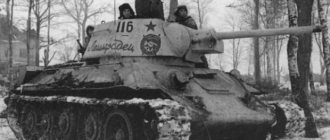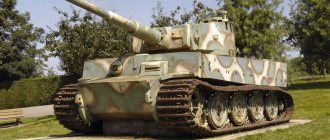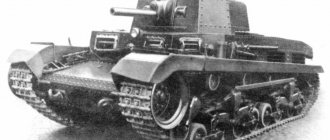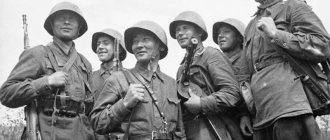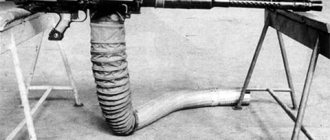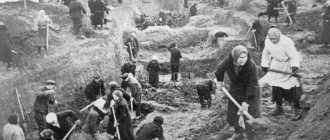The largest military conflict in world history was the Second World War. 62 states out of 74 that existed on the world map at that time took part in it. Over 80% of the population of the entire planet lived in them. Military operations lasted 6 years, from September 1, 1939 to September 2, 1945.
Start of the war
It should be remembered that in Africa, fighting took place since 1935 (the Ethiopian campaign of Italy), in Asia since 1937 (the Sino-Japanese War), and in Europe, by August 31, 1939, three states disappeared from the map: Austria, Czechoslovakia and Albania. However, the date of the beginning of World War II is generally considered to be the German attack on Poland on the morning of September 1, 1939, because after this France, Great Britain and their numerous colonies entered the war.
Rice. 1. World War II in Europe map.
On September 17, Soviet troops entered the eastern territories of Poland, however, it remained neutral until June 21, 1941, as did the United States, which remained neutral until early December 1941. Japan declared its neutrality in the European war back in September 1939. It began fighting against Great Britain in December 1941.
The Polish government fled the country on September 17 to Romania, and Warsaw capitulated on September 28. Then there was a lull in Europe, until April, and in fact even until the beginning of May 1940. On April 9, the Germans forced Denmark to capitulate within hours, and the campaign against Norway lasted from April 9 to June 8 due to the length of the latter and British aid.
The main battles in Europe in 1940 lasted from May 10 to June 25. The German command managed to defeat Holland in a few days, Belgium in less than three weeks, and France by the end of this period. A collaborationist government with its capital in the city of Vichy appeared in its southern part. It was also called the “French State” or “Vichy France”.
De facto it existed until August 1944.
In April-May 1940, Yugoslavia and Greece were defeated by the German army; the role of the Italians was secondary. A resistance movement developed in the occupied Balkan countries, including Albania. As a result, in October 1944 the German army was withdrawn from Greece, and on November 29, 1944 - from Albania.
Italy had no success in 1940, they lost the campaign in Epirus against Greece and the offensive in the Alps against France. The allies of the Third Reich in Europe fought rather weakly on all fronts, both African and Balkan (Italy), and on the Eastern (Romania, Slovakia).
⚡
The USSR also managed to wage a war with Finland from November 1939 to March 1940. It should be considered as a separate military conflict, like the battles at Khalkhin Gol in the summer of 1939.
Rice. 2. World War II in Asia map.
African Front[edit]
Main article: African theaters of World War II
- Western Desert Campaign: June 1940 - February 1943 Italian Invasion of Egypt: September 1940
- Operation Compass: December 1940 - February 1941 Battle of Nibeiwa: December 1940
- Battle of Sidi Barrani: December 1940
- Siege of Giaraboub: December 1940 – March 1941
- Battle of Bardia: January 1941
- Battle of Mechili: January 1941
- Capture of Kufra: January 1941 - March 1941
- Battle of Beda Fomme: February 1941
- Raid on Bardia: April 1941
- first action in Bir el Gubi: November 1941
- Battle of Bir Hakeim: May 26 – June 11, 1942
- Italian invasion of Sudan: June 1940
- Battle of Dakar: September 1940
- Terminal Operations: November 8, 1942
- Battle of Kasserine Pass: February 1943
Period with the participation of the USSR and the USA
On June 22, 1941, the Third Reich declared war on the USSR and after that the formation of an anti-Hitler coalition gradually began. On December 7, 1941, the Japanese army attacked the US Navy base at Peter Harbor in the Hawaiian Islands and began active expansion in Southeast Asia. The Japanese managed to capture not only a significant part of China, but also the Philippines, Burma, Thailand, Indonesia, Malaysia, and French Indochina. In part of the occupied territory, the Japanese army held out until its surrender on September 2, 1945.
The most important battles of World War II took place primarily on the Eastern Front of the European theater of operations. They date back to the period of the Great Patriotic War. The sequence of main dates and events is as follows:
- Summer-autumn campaign of the German army on the Eastern Front in 1941.
- Counter-offensive of the Red Army in December 1941-April 1942.
- Summer-autumn campaign of the German army on the southern sector of the Eastern Front in the summer-autumn of 1942. From Voronezh to Stalingrad and Elbrus with the participation of Italian, Romanian and Croatian units.
- Offensive operations of the Red Army in the period from November 1942 to May 1945, from Stalingrad to Berlin, Prague and Vienna.
Also, troops of the USSR and Mongolia took part in the defeat of the Japanese army in Manchuria, Korea, Sakhalin and the Kuril Islands in August 1945.
Briefly, the order of the main events of the Second World War of 1949-1945 can be presented in the following table:
| date | Event |
| September 1, 1939 | The Third Reich's attack on Poland, the beginning of World War II |
| April 9 – June 8, 1940 | Beginning of the Danish-Norwegian Wehrmacht campaign |
| May 10 – June 25, 1940 | French campaign |
| June 22, 1941 – May 9, 1945 | The Great Patriotic War |
| December 7, 1941 | US entry into the war after the attack on Pearl Harbor |
| January 1, 1942 | Formation of the anti-Hitler coalition, at first there were 26 states in it |
| November 28 – December 1, 1943 | Conference in Tehran |
| June 6, 1944 | Opening of a second front in Western Europe |
| February 4-11, 1945 | Yalta Conference |
| May 8-9, 1945 | The surrender of Germany, the end of the war in Europe |
| September 2, 1945 | End of World War II, Japanese surrender |
?
In June 1944, a second front opened in Europe. American, British and partially French troops met with Red Army units on the Elbe at the end of April 1945. By May 1943, the Germans were defeated in North Africa, and at the end of April 1945 the campaign in Italy ended. Local partisans took part in the liberation of the country.
Rice. 3. Stalin Roosevelt and Churchill.
Estimation of the ratio of losses on the Soviet-German and Western Front
The change in the balance of power in the international arena is also associated with the process of revising the role of the participants in the anti-Hitler coalition in the victory over Nazi Germany. Not only in modern media, but also in a number of historical works, old myths are supported or new myths are created. The old ones include the opinion that the Soviet Union achieved victory only thanks to incalculable losses, many times greater than the losses of the enemy, and the new ones include the decisive role of Western countries, mainly the United States, in victory and the high level of their military skill. We will try, based on the statistical material available to us, to offer a different opinion.
The criterion used is total data, such as, for example, the losses of the parties during the entire war, which, due to their simplicity and clarity, confirm one or another point of view.
In order to select from sometimes contradictory data those that can be relied upon with a significant degree of reliability, it is necessary to use specific values in addition to total values. Such values may include losses per unit of time, for example, daily, losses falling on a certain section of the front length, etc.
A team of authors led by Colonel General G. F. Krivosheev in 1988-1993. a comprehensive statistical study of archival documents and other materials containing information about human losses in the army and navy, border and internal troops of the NKVD was carried out. The results of this major research were published in the work “Russia and the USSR in the Wars of the 20th Century.”
During the Great Patriotic War, 34 million people were drafted into the Red Army, including those drafted in June 1941. This amount is almost equal to the mobilization resource that the country had at that time. The losses of the Soviet Union in the Great Patriotic War amounted to 11,273 thousand people, that is, a third of the number conscripted. These losses are, of course, very large, but everything can be learned in comparison: after all, the losses of Germany and its allies on the Soviet-German front are also great.
Table 1 shows the irretrievable losses of Red Army personnel by year of the Great Patriotic War. Data on the magnitude of annual losses are taken from the work “Russia and the USSR in the Wars of the 20th Century” [1]. This includes killed, missing, captured and those who died in captivity.
Table 1. Losses of the Red Army
The last column of the proposed table shows the average daily losses suffered by the Red Army. In 1941, they were the highest, since our troops had to retreat in very unfavorable conditions, and large formations were surrounded, in the so-called cauldrons. In 1942, losses were significantly less, although the Red Army also had to retreat, but there were no longer large cauldrons. In 1943 there were very stubborn battles, especially on the Kursk Bulge, but from that year until the end of the war, the troops of Nazi Germany had to retreat. In 1944, the Soviet High Command planned and carried out a number of brilliant strategic operations to defeat and encircle entire groups of German armies, so the losses of the Red Army were relatively small. But in 1945, daily losses increased again, because the tenacity of the German army increased, since it was already fighting on its own territory, and German soldiers courageously defended their fatherland.
Let us compare the losses of Germany with the losses of England and the USA on the Second Front. We will try to evaluate them based on the data of the famous Russian demographer B. Ts. Urlanis. In the book “History of Military Losses,” Urlanis, speaking about the losses of England and the United States, provides the following data: [2]
Table 2. Losses of the British armed forces in World War II (thousands of people)
In the war with Japan, England lost “11.4% of the total number of dead soldiers and officers,” therefore, in order to estimate the amount of England’s losses on the Second Front, we need to subtract the losses for 4 years of war from the total amount of losses and multiply by 1 – 0.114 = 0.886:
(1,246 – 667) 0.886 = 500 thousand people.
Total US losses in World War II amounted to 1,070 thousand, of which approximately three quarters were losses in the war with Germany, thus
1,070 * 0.75 = 800 thousand people.
We can assume that the total losses of England and the United States on the Second Front are: 500 + 800 = 1,300 thousand people.
The total total losses of England and the USA are
1,246 + 1,070 = 2,316 thousand people.
Thus, the losses of England and the United States on the Second Front amount to approximately 60% of their total losses in World War II.
As mentioned above, the losses of the USSR amount to 11.273 million people, that is, at first glance, incomparable with the losses amounting to 1.3 million people suffered by England and the USA on the Second Front. On this basis, the conclusion is drawn that the Allied command fought skillfully and took care of people, while the Soviet High Command allegedly filled the enemy trenches with the corpses of its soldiers. Let us allow ourselves to disagree with such ideas. Based on the data on daily losses given in Table 1, it can be obtained that from June 7, 1944 to May 8, 1945, that is, during the existence of the Second Front, the losses of the Red Army amounted to 1.8 million people, which is only slightly higher than the losses of the Allies. As is known, the length of the Second Front was 640 km [3], and the Soviet-German Front was from 2,000 to 3,000 km, on average 2,500 km, i.e. 4-5 times greater than the length of the Second Front. Therefore, on a front section with a length equal to the length of the Second Front, the Red Army lost approximately 450 thousand people, which is 3 times less than the losses of the allies.
On the fronts of World War II, the armed forces of Nazi Germany itself lost 7,181 thousand, and the armed forces of its allies - 1,468 thousand people, for a total of 8,649 thousand. [4]
Thus, the ratio of losses on the Soviet-German front turns out to be 13:10, that is, for every 13 killed, missing, wounded, or captured Soviet soldiers, there are 10 German soldiers.
According to the Chief of the German General Staff F. Halder, in 1941-1942. The fascist army lost about 3,600 soldiers and officers every day, [5] therefore, in the first two years of the war, the losses of the fascist bloc amounted to about two million people. This means that over the subsequent period, the losses of Germany and its allies amounted to about 6,600 thousand people. During the same period, the losses of the Red Army amounted to approximately 5 million people. Thus, in 1943-1945, for every 10 Red Army soldiers killed, there were 13 fascist army soldiers killed. These simple statistics clearly and objectively characterize the quality of troop leadership and the degree of care for soldiers.
General A.I. Denikin
Let us cite the opinion of a high military authority - General A.I. Denikin.
“Be that as it may, no tricks could detract from the significance of the fact that the Red Army has been fighting skillfully for some time now, and the Russian soldier has been selflessly fighting. The successes of the Red Army could not be explained by numerical superiority alone. In our eyes, this phenomenon had a simple and natural explanation.
From time immemorial, Russian people were smart, talented and loved their homeland from the inside. From time immemorial, the Russian soldier was immensely resilient and selflessly brave. These human and military qualities could not drown out twenty-five Soviet years of suppression of thought and conscience, collective farm slavery, Stakhanovite exhaustion and the replacement of national self-awareness with international dogma. And when it became obvious to everyone that there was an invasion and conquest, and not liberation, that only the replacement of one yoke with another was foreseen, the people, postponing their reckoning with communism until a more opportune time, rose up for the Russian land just as their ancestors rose up during the invasions Swedish, Polish and Napoleonic...
Under the sign of the international, the inglorious Finnish campaign and the defeat of the Red Army by the Germans on the roads to Moscow took place; under the slogan of defending the Motherland, the German armies were defeated!” [6]
Opinion of General A.I. Denikin is especially important for us because he received a deep and comprehensive education at the Academy of the General Staff, and had his own wealth of combat experience acquired in the Russo-Japanese, World War I and Civil Wars. His opinion is also important because, while remaining an ardent patriot of Russia, he was and until the end of his life remained a consistent enemy of Bolshevism, so one can rely on the impartiality of his assessment.
Let's consider the ratio of losses of the Allied and German armies. The literature provides the total losses of the German army, but data on German losses on the Second Front is not given, probably deliberately. The Great Patriotic War lasted 1418 days, the Second Front existed for 338 days, which is 1/4 of the duration of the Great Patriotic War. Therefore, it is assumed that Germany’s losses on the Second Front are four times less. Thus, if on the Soviet-German front German losses amount to 8.66 million people, then we can assume that German losses on the Second Front are about 2.2 million, and the loss ratio is approximately 10 to 20, which would seem to confirm point of view about the high military art of our allies in World War II.
We cannot agree with this point of view. Some Western researchers also disagree with her. “Against the inexperienced, albeit eager, Americans and the war-weary, cautious British, the Germans could field an army that, in the words of Max Hastings, “won a historical reputation for being undaunted and reaching its zenith under Hitler.” Hastings states: “Everywhere during the Second World War, whenever and wherever British and American troops met head-on with the Germans, the Germans won.” <…> What struck Hastings and other historians most was the ratio of losses, which was two to one and even higher in favor of the Germans.” [7]
American Colonel Trevor Dupuy conducted a detailed statistical study of German actions in [272] the Second World War. Some of his explanations for why Hitler's armies were so much more effective than their opponents seem unfounded. But not a single critic questioned his main conclusion that on almost every battlefield during the war, including Normandy, the German soldier was more effective than his opponents.
Unfortunately, we do not have the data that Hastings used, but if there is no direct data on German losses on the Second Front, we will try to estimate them indirectly. Considering that the intensity of the battles waged by the German army in the West and in the East was the same, and that the losses per kilometer of front were approximately equal, we obtain that German losses on the Eastern Front should not be divided by 4, but, taking into account the difference in the length of the front line, at about 15-16. Then it turns out that Germany lost no more than 600 thousand people on the Second Front. Thus, we find that on the Second Front the ratio of losses is 22 Anglo-American soldiers to 10 German ones, and not vice versa.
A similar ratio was observed in the Ardennes operation, which was carried out by the German command from December 16, 1944 to January 28, 1945. As the German general Melentin writes, [8] during this operation the allied army lost 77 thousand soldiers, and the German army lost 25 thousand, that is, we get a ratio of 31 to 10, even exceeding that obtained above.
Based on the above reasoning, it is possible to refute the myth about the insignificance of German losses on the Soviet-German front. It is said that Germany allegedly lost about 3.4 million people. If we assume that this value corresponds to the truth, then we will have to accept that on the Second Front German losses amounted to only:
3.4 million/16 = 200 thousand people,
which is 6-7 times less than the losses of England and the United States on the Second Front. If Germany fought so brilliantly on all fronts and suffered such insignificant losses, then it is unclear why it did not win the war? Therefore, assumptions that the losses of the Anglo-American army are lower than the German ones, as well as that the German losses are significantly lower than the Soviet ones, must be rejected, since they are based on incredible figures and are not consistent with reality and common sense.
Thus, it can be argued that the power of the German army was decisively undermined by the victorious Red Army on the Soviet-German front. With an overwhelming superiority in people and equipment, the Anglo-American command showed amazing indecisiveness and ineffectiveness, one might say mediocrity, comparable to the confusion and unpreparedness of the Soviet command in the initial period of the war in 1941-1942.
This statement can be supported by a number of pieces of evidence. First, we will give a description of the actions of the special groups, which were led by the famous Otto Skorzeny, during the offensive of the German army in the Ardennes.
“On the first day of the offensive, one of Skorzeny’s groups managed to get through the gap made in the allied lines and advance to Yun, which was located near the banks of the Meuse. There, having changed her German uniform to an American one, she dug in and fortified herself at the intersection of roads and observed the movement of enemy troops. The group commander, who spoke fluent English, went so far as to take a bold walk around the area to “get acquainted with the situation.”
A few hours later, an armored regiment passed near them, and its commander asked them for directions. Without blinking an eye, the commander gave him a completely wrong answer. Namely, he stated that these “German pigs have just cut off several roads. He himself received an order to make a big detour with his column.” Very happy that they were warned in time, the American tankers actually headed along the path that “our man” showed them.
Returning to their unit, this detachment cut several telephone lines and removed signs posted by the American quartermaster service, and also laid mines here and there. Twenty-four hours later, all the men and officers of this group returned to the lines of their troops in perfect health, bringing interesting observations about the confusion that reigned behind the American front line at the beginning of the offensive.
Another of these small detachments also crossed the front line and advanced all the way to the Meuse. According to his observations, the Allies could be said to have done nothing to protect the bridges in the area. On the way back, the detachment was able to block three highways leading to the front line by hanging colored ribbons on the trees, which in the American army means that the roads are mined. Subsequently, Skorzeny's scouts saw that the columns of British and American troops actually avoided these roads, preferring to make a long detour.
The third group discovered an ammunition depot. After waiting until dark; The commandos "removed" the guards and then blew up this warehouse. A little later they discovered a telephone collector cable, which they managed to cut in three places.
But the most significant story happened to another detachment, which on December 16 suddenly found itself directly in front of the American positions. Two GI companies prepared for a long defense, built pillboxes and installed machine guns. Skorzeny's men must have been somewhat confused, especially when an American officer asked them what was happening there on the front lines.
Pulling himself together, the detachment commander, dressed in the fine uniform of an American sergeant, told the Yankee captain a very interesting story. Probably, the Americans attributed the confusion that was visible on the faces of the German soldiers to the last skirmish with the “damned Boches.” The detachment commander, a pseudo-sergeant, stated that the Germans had already bypassed this position, both on the right and on the left, so that it was practically surrounded. The amazed American captain immediately gave the order to retreat." [9]
Let us also use the observations of the German tankman Otto Carius, who fought against Soviet soldiers from 1941 to 1944, and against Anglo-American soldiers from 1944 to 1945. Let us cite an interesting event from his front-line experience in the West. “Almost all of our Kubel passenger cars were disabled. Therefore, one evening we decided to replenish our fleet with an American one. It never occurred to anyone to consider this a heroic act!
The Yankees slept in their houses at night, as “front-line soldiers” were supposed to do. There was at best one sentry outside, but only if the weather was good. Around midnight we set off with four soldiers and returned quite soon with two jeeps. It was convenient that they did not require keys. All you had to do was turn on the switch and the car was ready to go. Only when we returned to our positions did the Yankees open indiscriminate fire into the air, probably to calm their nerves."
Having personal experience of the war on the eastern and western fronts, Carius concludes: “In the end, five Russians posed a greater danger than thirty Americans.”[10] Western researcher Stephen E. Ambrose says that casualties can be minimized “only by ending the war quickly, rather than by exercising caution during offensive operations.” [eleven]
Based on the evidence given and the relationships obtained above, it can be argued that at the final stage of the war, the Soviet command fought more skillfully than the German and much more effectively than the Anglo-American, because “the art of warfare requires courage and intelligence, and not just superiority in technology and number of troops." [12]
[1] Russia and the USSR in the wars of the twentieth century. M. "OLMA-PRESS". 2001, p. 246. [2] B. C. Urlanis. History of military losses. St. Petersburg 1994 228-232. [3] O'Bradley. Notes of a soldier. Foreign literature. M 1957 p. 484. [4] Russia and the USSR in the wars of the twentieth century. M. "OLMA-PRESS". 2001, p. 514. [5] Colonel General F. Halder. War diary. Volume 3, book 2. Military publishing house of the USSR Ministry of Defense. P. 436 [6] D. Lekhovich. Whites against reds. Moscow “Sunday”. 1992, p. 335. [7] Stephen E. Ambrose. D-Day AST. M. 2003. pp. 47, 49. [8] F. Melentin. Tank battles 1939-1945. Test site AST. 2000. [9] Otto Skorzeny. Smolensk Rusich. 2000 p. 388, 389 [10] Otto Carius. "Tigers in the mud." M. Centropolygraph. 2005 p. 258, 256 [11] Stephen E. Ambrose. D-Day AST. M. 2003. pp. 47, 49. [12] J. F. S. Fuller World War II 1939-1945. Publishing House of Foreign Literature. Moscow, 1956, p.26.
www. world-war.ru
Mediterranean Front[edit]
Main article: Mediterranean and Middle Eastern theater of World War II
- Battle of the Mediterranean: June 1940 - May 1945 Battle of the Espero Convoy
- Attack on Mers el-Kebir
- Battle of Calabria
- Battle of Cape Spada
- Battle of Cape Passero (1940)
- Battle of Taranto
- Battle of Cape Spartivento
- Excess operation
- Raid on Souda Bay
- Battle of Cape Matapan
- Battle of the Tarigo Convoy
- Operating substance
- Operation Halberd
- Battle of Duisburg Convoy
- Battle of Cape Bon (1941)
- First Battle of Sirte
- Raid on Alexandria (1941)
- Second Battle of Sirte
- Operation energetic
- Operation Pedestal
- Battle of Skerki Bank
- Raid on Algeria
- Battle of the Cigno convoy
- Battle of the Campobasso convoy
- Battle of the Messina Convoy
- Operation Scylla
- Battle of the Ligurian Sea
- Italian invasion of Greece: October 1940 - April 1941 Battle of Pindus
- Battle of Hill 731
- Bombing of Belgrade
- Battle of the Metaxas Line
- Operation Ladbroke
- Operation farce
- Battle of Leros
- Operation Diadem
- Battle of Cisterna
- Battle of Gemmano
- Battle of Bologna:
Chinese front[edit]
Chinese Theater of World War II
- Second Sino-Japanese War: (1937–1945) Marco Polo Bridge Incident, July 1937
- Battle of Shanghai, August 1937. Defense of Xihan Depot October 26, 1937.
- Battle of Pingxingguang, September 1937
- Battle of Taierzhuang, March 1938
- Battle of Lanfeng, May 1938
- Battle of Wanjialing, August 1938
- Battle of Kunlun Pass, December 1939
- Battle of West Suiyuan, January - February 1940
- Battle of Central Henan, April 1944
- Battle of Mutanchyan: August 1945
Atlantic Ocean[edit]
Atlantic Ocean
- Battle of the Atlantic: 1939–1945 Battle of the River Plate
- Altmark incident
- Convoy SC 7
- Convoy HX 84
- Operation Berlin
- Actions April 4, 1941
- Actions May 9, 1941
- Battle of Denmark Strait
- Battle of Bismarck
- Operation Drumbeat
- Battle of Torpedo Alley
- Actions March 27, 1942
- Battle of St. Lawrence
- Actions June 6, 1942
- Convoy PQ 17
- Naval Battle of Casablanca
- Battle of the Barents Sea
- Battle of Sept-Îles
- Battle of North Cape
- Operation Stonewall Battle of the Bay of Biscay
On the causes and ideological justification of the war
The main reason for the war on the Eastern Front of 1941-1945. were the aggressive aspirations of the ruling elite of Nazi Germany, led by Adolf Hitler. Since 1925, he spoke about the need to expand the “living space” of the German nation to the East.
The European territories of the USSR were supposed to be populated (primarily Ukraine) by the Germans. The indigenous population is partially exterminated, partially driven beyond the Volga. Some part of the population loyal to the conquerors was supposed to be left for use as cheap or completely free labor.
The vast majority of Wehrmacht and Waffen SS soldiers viewed the war on the Eastern Front from a Nazi point of view, considering their opponents to be an inferior race - subhumans.
Hitler on German Square
The German leadership considered the USSR weak militarily and politically, and the Red Army as a “colossus with feet of clay.” In Hitler's figurative expression, “it is enough just to knock down the door for the entire rotten structure to collapse.”
Therefore, Germany counted on a lightning war. After all, in a long war with the USSR, due to the depletion of resources, it had no prospects for victory.
However, after the Battle of Stalingrad (1943) and the progressive crisis in the Third Reich, Nazi propaganda began to try to portray the war as the defense of Germany and the entire Western civilization from the invasion of the “Bolshevik hordes.”
Middle Eastern Front[edit]
Main article: Mediterranean and Middle Eastern theater of World War II
- Iraq Campaign: May 1941
- Syrian-Lebanese campaign: June - July 1941 Battle of the Litani River: June 1941
- Battle of Sidon (1941): June 1941
- Battle of Kissou: June 1941
- Battle of Merjayun: June 1941
- Battle of Palmyra: July 1941
- Battle of Deir ez-Zor: July 1941
- Battle of Damour: July 1941
- Battle of Beirut: July 1941
Western Front[edit]
Main article: Western Front (World War II)
- French advance into Germany: September 1939
- Operation Weserübung: April–June 1940 German invasion of Denmark
- German invasion of Norway Battle of Narvik
- Battle of Drobak Strait
- Battle of Midtskogen
- Battle of Dombos
- Battle of Hegra Fortress
- Åndalsnes Marinas
- Battle of Gratangen
- Battle of Hölärast Bridge
- Battle of Kvam
- Battle of Vignesvingen
- Battle of The Hague
- Battle of Fort Eben-Emael
- Battle of Sedan
- Kanalkampf
- Operation Overlord: June - August 1944 Normandy landings
- Battle of Carentan Battle of Bloody Gulch
- Operation Tractable Battle of Hill 262
- Operation Romeo
- Operation Astonia
- Battle of Nancy
- Battle of Arnhem
- Battle of Crucific Hill
- Operation Queen
- Battle of Elsenborn Ridge Losheim Gap
- Battle of Remagen
- Operation Undertone


